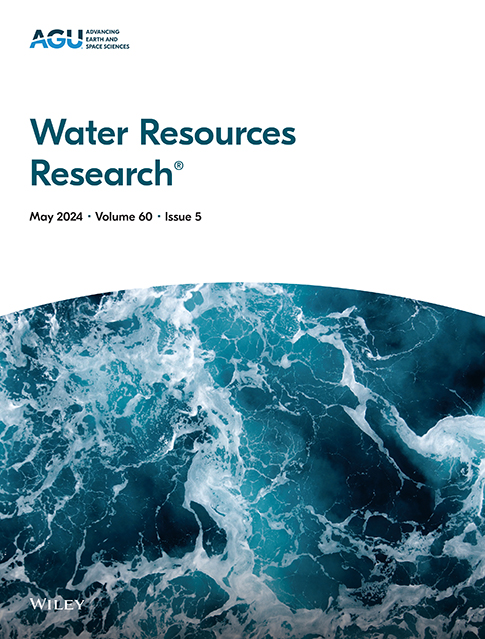骨架化对城市水系模型模拟影响的综合评价框架
IF 5
1区 地球科学
Q2 ENVIRONMENTAL SCIENCES
引用次数: 0
摘要
城市排水网络模型(UDNMs)已被广泛用于促进洪水管理。通常,UDNM是使用地理信息系统(GIS)的数据开发的,因此它由许多短管道和连接节点或人孔组成。为了提高建模效率,基于gis的模型通常通过去除许多元素来进行骨架化。然而,令人惊讶的是,人们对这种骨架化在多大程度上影响模型的模拟精度缺乏了解,导致洪水风险估计存在不确定性。本文首次尝试定量评价不同骨架化水平对UDNMs水力性能的多维影响。这一目标是通过一个新的评估框架来实现的,该框架由八个现有的和新的指标组成,这些指标利用了水文、主管道水力和洪水分布特性。一个真实的UDNM被用来说明在不同降雨条件和不同骨架化水平下的新框架。该框架还用于比较两种补偿方法在减轻模型骨架化影响方面的性能。结果表明:(a)模型骨架化可以显著影响出水口峰值流量的大小,最大高估幅度可达20%;(b)模型骨架化也可以影响主管道水力学,最大流量增加幅度可达35%;(c)模型骨架化可以显著改变过去研究中很大程度上忽略的洪水分布特性。这些发现为UDNM骨架化提供了指导,在工程实践中应该意识到它们的相关影响。本文章由计算机程序翻译,如有差异,请以英文原文为准。
A Comprehensive Framework for Evaluation of Skeletonization Impacts on Urban Drainage Network Model Simulations
Urban drainage network models (UDNMs) have been widely used to facilitate flood management. Typically, a UDNM is developed using data from Geographic Information Systems (GIS), and hence it consists of many short pipes and connection nodes or manholes. To improve modeling efficiency, a GIS-based model is generally skeletonized by removing many elements. However, there has been surprisingly a lack of knowledge on to what extent such skeletonization can affect the model's simulation accuracy, resulting in uncertainty in flood risk estimation. This paper makes the first attempt to quantitatively evaluate multidimensional impacts of different skeletonization levels on hydraulic properties of UDNMs. This goal is achieved by a new evaluation framework comprising of eight existing and new metrics that make use of hydrographs, main pipe hydraulics and flood distribution properties. A real-life UDNM is used to illustrate the new framework under various rainfall conditions and different skeletonization levels. The new framework is also used to compare the performance of two compensation methods in mitigating impacts caused by model skeletonization. Results obtained show that: (a) model skeletonization can significantly affect the magnitude of peak flow at the outfall, with a maximum overestimation of up to 20%, (b) hydraulics in main pipes can also be affected by model skeletonization with the maximum flow increasing up to 35%, and (c) model skeletonization may significantly alter the flood distribution properties which has been largely ignored in past studies. These findings provide guidance for UDNM skeletonization, where their associated impacts should be aware in engineering practice.
求助全文
通过发布文献求助,成功后即可免费获取论文全文。
去求助
来源期刊

Water Resources Research
环境科学-湖沼学
CiteScore
8.80
自引率
13.00%
发文量
599
审稿时长
3.5 months
期刊介绍:
Water Resources Research (WRR) is an interdisciplinary journal that focuses on hydrology and water resources. It publishes original research in the natural and social sciences of water. It emphasizes the role of water in the Earth system, including physical, chemical, biological, and ecological processes in water resources research and management, including social, policy, and public health implications. It encompasses observational, experimental, theoretical, analytical, numerical, and data-driven approaches that advance the science of water and its management. Submissions are evaluated for their novelty, accuracy, significance, and broader implications of the findings.
 求助内容:
求助内容: 应助结果提醒方式:
应助结果提醒方式:


